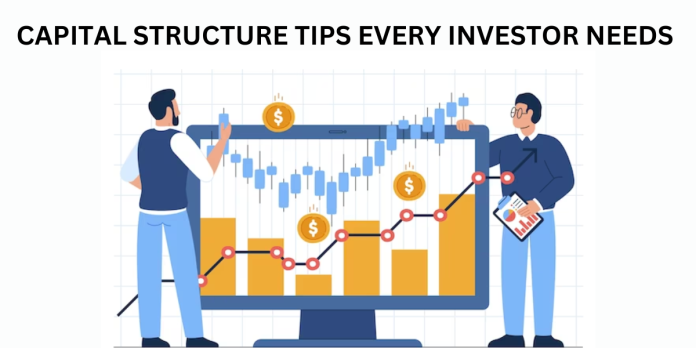Capital structure, the way a company finances its operations through debt and equity, is a critical factor to consider when selecting stocks. It can significantly impact a company’s financial health, risk profile, and potential return on investment.
What is Capital Structure?
Capital structure refers to the composition of a company’s long-term financing sources, including debt and equity. Debt financing involves borrowing money from lenders, such as banks or bondholders. Equity financing involves raising capital by selling shares of ownership in the company to investors.
Understanding the Debt-to-Equity Ratio
The debt-to-equity (D/E) ratio is a key metric used to analyse a company’s capital structure. It measures the proportion of debt financing compared to equity financing. A high D/E ratio indicates that a company relies heavily on debt, potentially increasing its risk profile. Conversely, a low D/E ratio suggests a more conservative financing approach with potentially lower risk.
Read: Top 5 Essential Ratios for Evaluating Companies
Impact of Capital Structure on Financial Health
- Financial Flexibility: A company with a lower D/E ratio typically has greater financial flexibility. It can access additional capital through debt financing or equity issuance to pursue growth opportunities or weather economic downturns.
- Interest Expense: Debt financing carries an interest expense, which reduces a company’s earnings and profitability. Companies with high debt levels may be more susceptible to fluctuations in interest rates, further impacting their financial performance.
- Risk Profile: A company with a higher D/E ratio is generally considered riskier. This is because they are more vulnerable to financial distress if economic conditions deteriorate, making it difficult to meet their debt obligations.
- Return on Equity (ROE): Debt financing can boost a company’s ROE if the return on invested capital (ROIC) exceeds the interest cost of debt. However, if ROIC falls below interest expense, debt can magnify losses and decrease ROE.
Read: Understand ROIC: Power of Return on Invested Capital
Understanding Capital Structure for Investors
Understanding a company’s capital structure is crucial for investors to make informed investment decisions. By analyzing the D/E ratio, investors can assess the company’s financial health, risk profile, and growth potential.
Here are some key considerations:
- Industry Comparison: D/E ratios vary significantly across industries. Comparing a company’s D/E ratio to its industry peers can provide a more accurate assessment of its leverage and risk profile.
- Growth Stage: Companies in their early growth stages often have higher D/E ratios as they rely heavily on debt financing to fund their expansion. However, as they mature, it’s expected for their D/E ratio to decrease.
- Economic Conditions: During economic downturns, investors may prefer companies with lower D/E ratios due to their lower risk profile. Conversely, during periods of economic growth, investors may be more tolerant of higher D/E ratios, seeking companies with higher potential returns.
Additional factors to consider
- Debt Covenants: Debt agreements often contain covenants that restrict a company’s financial activities to ensure its ability to repay its debt. Understanding these covenants is important to assess any potential risks or limitations on the company’s operations.
- Interest Coverage Ratio: This ratio measures a company’s ability to meet its interest expenses from its earnings before interest and taxes (EBIT). A higher interest coverage ratio indicates a greater ability to service debt obligations.
Conclusion
Capital structure is a complex but crucial concept for investors to understand. By analyzing a company’s D/E ratio and other relevant factors, investors can make informed decisions about the level of risk and potential return associated with their investments.


